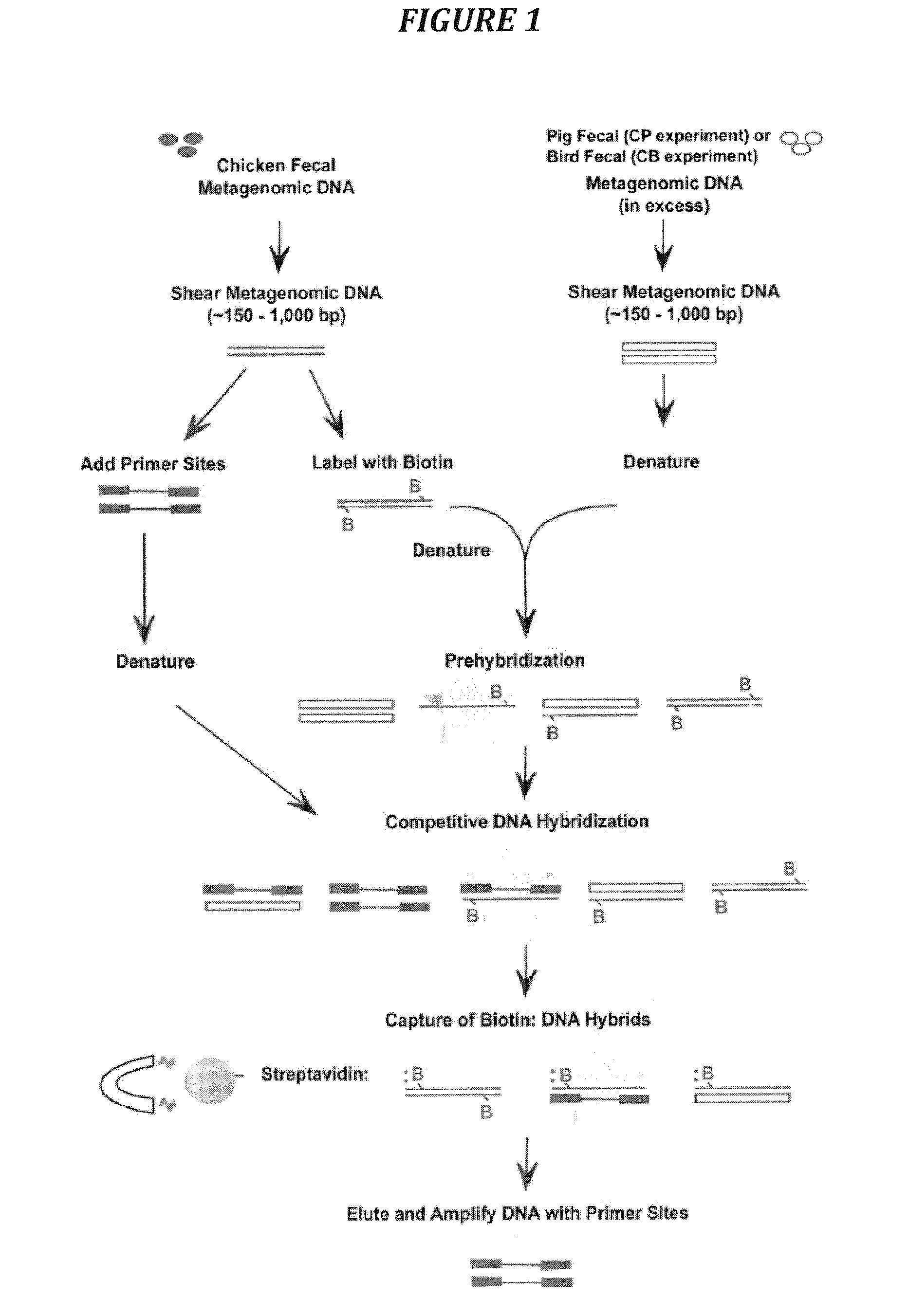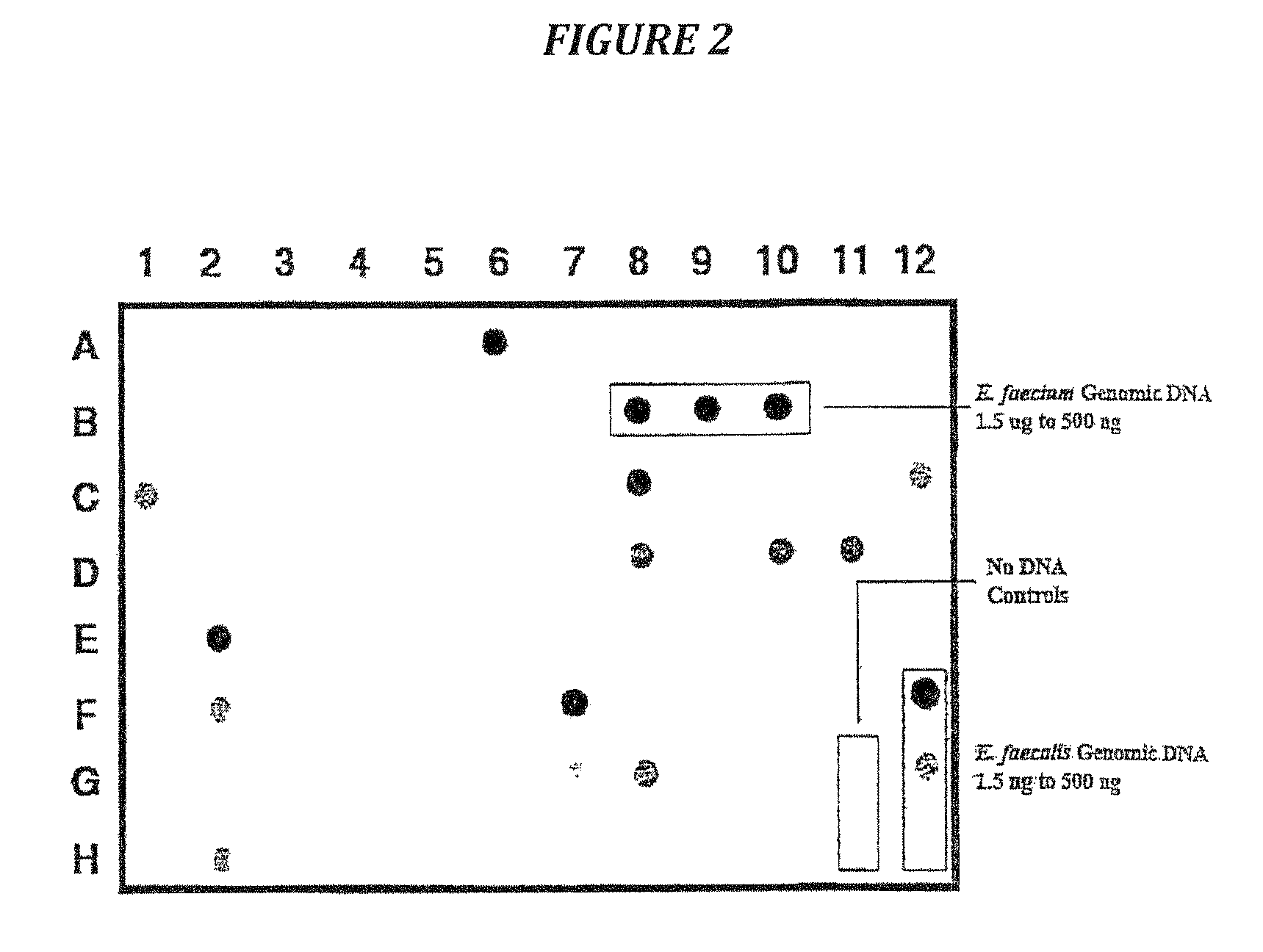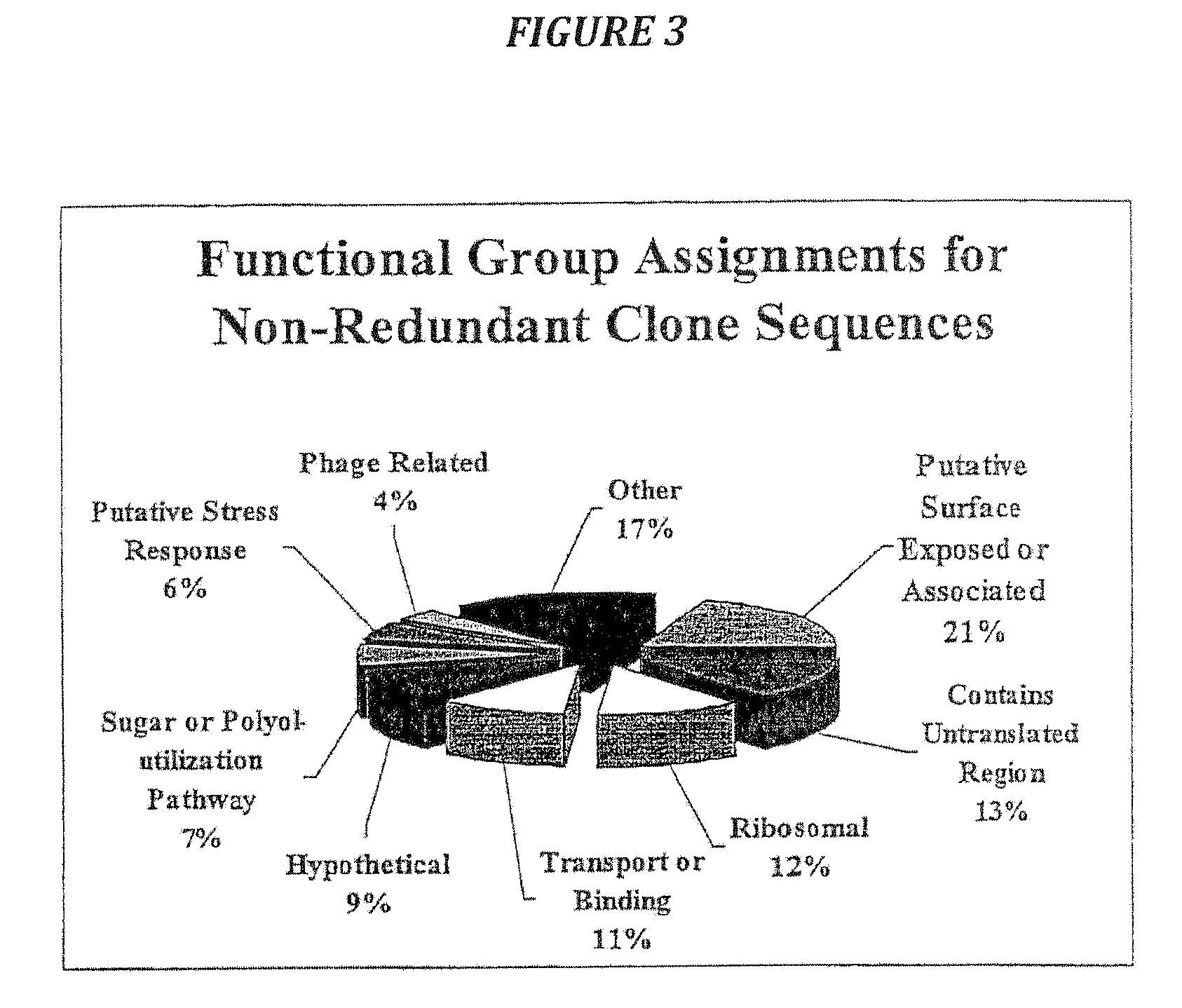Species-specific primer sets and identification of species-specific DNA sequences using genome fragment enrichment
a technology of genome fragment and primer set, which is applied in the field of species-specific primer set and species-specific dna sequence identification using genome fragment enrichment, can solve the problems of increased risks associated with recreational use of waterways, increased risk of poultry waste disposal, and inability to discriminate among different species of bacterial strains or animal sources of fecal contamination, so as to accelerate the identification of dna sequences and reduce the practice
- Summary
- Abstract
- Description
- Claims
- Application Information
AI Technical Summary
Benefits of technology
Problems solved by technology
Method used
Image
Examples
Embodiment Construction
Genome Fragment Enrichment
[0059]Genome fragment enrichment is useful in identifying regions of genetic variation between two microbial genomes or metagenomes of entire bacterial communities such as microbiota present in fecal material from different animal species. For microbial genome comparisons, genome fragments from one microbial species are first hybridized with genomic DNA fragments from a second microbial species, and then these fragments are incubated with additional genomic DNA fragments from the first species containing defined sequence tags. The resulting DNA hybrids are captured, and all of the captured strands from the tagged pool are PCR amplified by primers complementary to the added terminal tag sequences. These amplified DNAs are sequences unique to the first microbial species or source. Sequences obtained are then unambiguously identified by cloning into E. coli plasmids and DNA sequencing.
[0060]Genome Fragment Enrichment uses a competitive hybridization process th...
PUM
| Property | Measurement | Unit |
|---|---|---|
| pore size | aaaaa | aaaaa |
| pore size | aaaaa | aaaaa |
| temperature | aaaaa | aaaaa |
Abstract
Description
Claims
Application Information
 Login to View More
Login to View More - R&D
- Intellectual Property
- Life Sciences
- Materials
- Tech Scout
- Unparalleled Data Quality
- Higher Quality Content
- 60% Fewer Hallucinations
Browse by: Latest US Patents, China's latest patents, Technical Efficacy Thesaurus, Application Domain, Technology Topic, Popular Technical Reports.
© 2025 PatSnap. All rights reserved.Legal|Privacy policy|Modern Slavery Act Transparency Statement|Sitemap|About US| Contact US: help@patsnap.com



